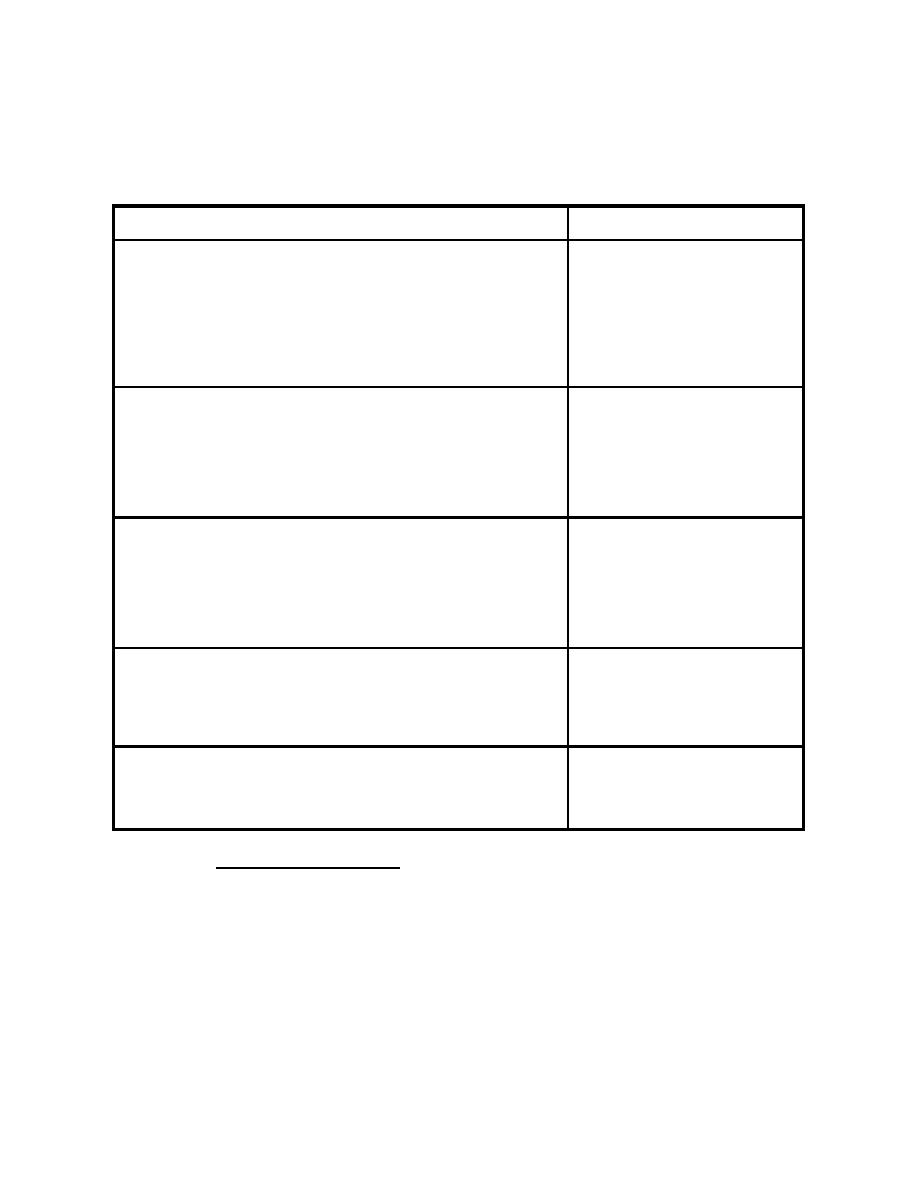

Custom Search
|
|

|
||
 MIL-HDBK-1013/12
Table D-28
Deterrence for Assets Stored Inside Facilities
Aggressor's Perception of the Possibility
Likelihood Rating Factor
of Success
2
Aggressor would perceive a very low possibility
of success and escape. Asset appears to be
heavily protected. The building housing the
asset is constructed of reinforced concrete or
masonry, it has glazing, window barriers or is
windowless, and has heavy steel doors. Obvious
protective measures include fencing or perimeter
walls, security lighting, access control, and
either guards or IDS and CCTV.
Aggressor would perceive a low possibility of
4
success and escape. Asset appears to be well-
protected. The building housing the asset is
constructed of reinforced concrete or masonry,
it has glazing, window barriers or is
windowless, and has heavy steel doors. Obvious
protective measures include fencing or walls,
security lighting, and IDS.
Aggressor would perceive a medium possibility of
6
success and escape. The building housing the
asset is constructed of reinforced concrete or
masonry, it has glazing, window barriers or is
windowless, and has heavy steel doors. There
are some visible protective measures, including
exterior lighting, and guard patrols at hourly
intervals.
Aggressor would perceive a high possibility of
8
success and escape. The building housing the
asset is of lightweight construction and has
glazing, window barriers or is windowless.
There are few visible protective measures. Only
building entrances are lit.
Aggressor would perceive a very high possibility
10
of success and escape. The building housing the
asset is of lightweight construction without
window barriers. There are no visible
protective measures.
D-3.4.11 Likelihood Rating. The likelihood that an aggressor
will attempt to compromise an asset is determined using the
results of evaluating each of the likelihood rating factors. Sum
the numerical values associated with the nine applicable
likelihood rating factors and compare them to the ranges of sums
in Table D-29 to select a likelihood rating. Select a likelihood
rating of very low, low, medium, high, or very high. Enter the
sums of the likelihood rating factors and the applicable
likelihood rating factors in the spaces provided on the AVAL
207
|
 |
|
 |
||